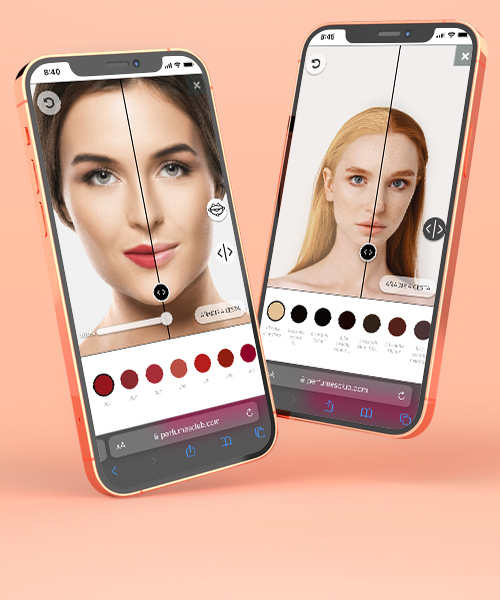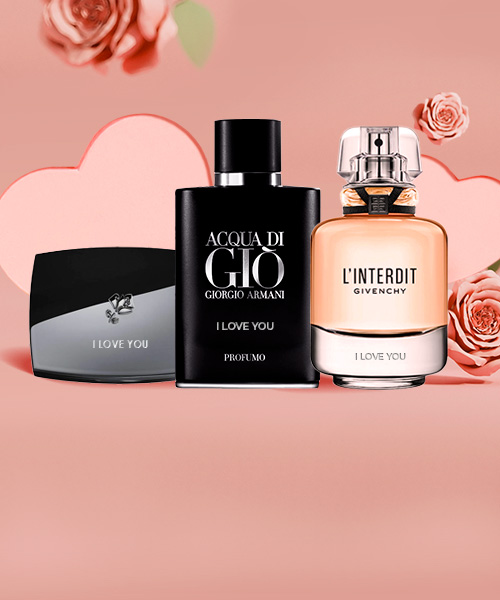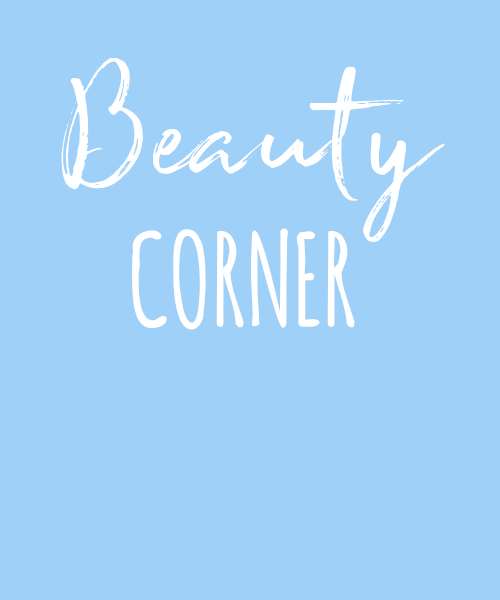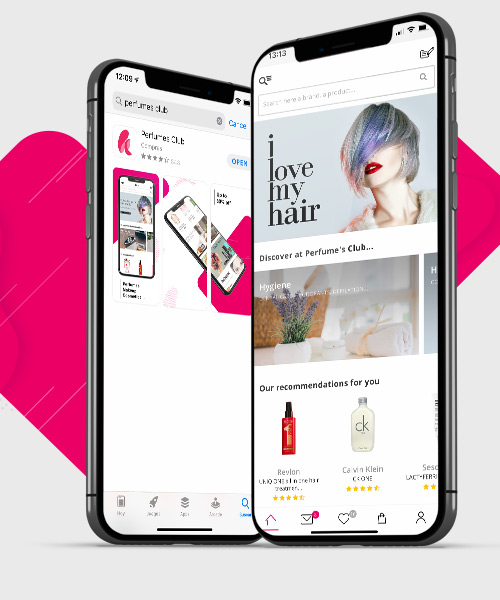Take care of your hair with the best professional hairdressing products at the best price online.: shampoos, professional conditioners, hairdressing sets, hair treatments, hair colouring... As well as hairdressing product brands with sulphate-free, silicone-free and ecological formulations... such as
Moroccanoil Kérastase,
Olaplex,
Salerm o
Wella... Get the best professional quality hairdressing products online. Take advantage of
the online offers on the best brands of hairdressing products with prices up to -80%.
Social media #beautytips
Get inspired and learn from our top tips and the trendiest products of the moment.
Other recommended PRODUCTS: professional hair straighteners | silicone-free conditioners | silicone free shampoo | curly hair shampoo | paraben free shampoo | hair ampoules
Well-groomed, lively hair, your best expression of beauty
Properly dealing with the women's hair or on Men's hair is a fundamental issue in order to feel confident and at ease with our appearance. Our hair is part of our personal beauty and to be perfect, we need a little dose of attention and daily care. From Perfume's Club we want to make this task easier for you, so we are going to detail you which are the essential topics you should know about your hair.
Start by identifying the problem you want to treat or mitigate. For this you will need to know what your hair type is and how you can treat your scalp. By following our steps you will know in advance which products can benefit you the most, as well as when is the best time to apply a repairing conditionera keratin maskor the thermo-protector.
Determine what characteristics your scalp has and what is your hair type
Before you establish a daily hair care routine, it is essential that you know what your scalp is like and how you are going to treat it. The dilemma often revolves around the sebaceous glands (responsible for secreting your hair's natural lubrication) which often lead to an excess (greasy hair or dandruff problems) or the opposite (dryness and brittle hair). As we do not all have the same metabolism and it is often influenced by external factors (stress, diet, habits, etc.), we must pay attention to the types of scalp that exist, to identify our own.:
- Fatty: has sebaceous glands that overproduce sebum, giving the hair a dull and dull appearance. This may be due to hormonal changes (common at puberty or maturity) or stress.
- Dry: this type of hair looks dull and lifeless, it is also more susceptible to breakage. The most obvious cause of this dryness is dehydration of the scalp. Water retention is poor and so is natural lubrication.
- Mixed: is when your scalp is somewhere between dry and oily, and is due to the fact that the sebaceous glands are highly active at the root, but do not have enough influence to permeate the entire hair, so the ends are dry and brittle. In this case you will need the same shampoo as an oily hair type, focusing only on the scalp. Then treat the ends dry, with a moisturiser or repair serum.
- Normal: is the most balanced type. It is shiny and docile, and is the result of a balanced and healthy lifestyle, as well as good genetics. If you combine this with the use of specific products for each of the cares that your hair may need, you will achieve incredible results.
Hair care products
In order to maintain healthy hair both inside and out it is essential to understand what type of scalp and hair we have. Knowing the types of scalps that exist, here are the hair types so you can identify yours and choose the hairdressing products that meet your needs.
- Thick hair: the main characteristic of this hair is that it has a thick strand. It is the most resistant hair type and withstands wear and tear, styling and dyeing better. However, it has more difficulty assimilating moisture than other hair types and can therefore lead to excessive volume and frizz.
- Fine hair: This is the opposite of coarse hair, the strand is fine and lacks volume and strength. You will need professional hairdressing products specifically for this type of hair.
- Straight hair: the strand of this type of hair is between the coarse and the fine type, therefore, it is balanced. However, there are several common problems
- Curly hair: is a dry and voluminous hair type. The strands are very wavy, fine and delicate. It should be washed gently and intensely nourished.
- Wavy hair: has strands that are not as curly as the curly hair type and with much broader strokes. For this reason it tends to be somewhat thicker and not as dense.
Types of hair products that can benefit your hair
As there are many types of hairdressing products to benefit your hair, you need to think carefully about which ones to choose for your daily care. In this sense, we want to help you by showing you in general terms, which products you can use to treat your hair and how to get the most out of them.:
- Some types of shampoos are:
- Neutral shampoo: this type of shampoo is good for normal, balanced hair that does not need to be treated for any specific problem.
- Moisturising shampoo: helps dry hair to retain moisture, making it more flexible and softer to the touch. It is recommended for curly or frizzy hair, fine hair and hair prone to dryness.
- Shampoo for coloured hair: aim to maintain the colour of the dye in the hair for a longer period of time, respecting the pigmentation. It is a very specific type for when our hair is dyed.
- Volumising shampoo: adds volume to fine, dry and dull-looking hair.
- Anti-dandruff shampoo: the shampoo par excellence for those with an oily scalp and excess sebum. They should be used as a very specific treatment in the event of this problem and should be treated delicately. In these cases it is best to seek advice from your dermatologist as soon as possible.
- Conditioners: serve to complement the shampoo and have softer and more emollient characteristics. The types of conditioners are the same as those detailed for shampoo and complement it.
- The masks are hairdressing products for dry hair treatments that need to retain moisture. These products also contain vitamins, silk proteins, flax, oats, etc. They nourish the hair, seal the cuticles and protect from external aggressions.
- We also have different types of fixatives that we can use depending on our objective.:
- Fixing gels: are used to maintain cohesion between strands of hair. They give a wet shine and are not sticky to the touch.
- Foams: have a very similar effect to gels, forming a very thin, transparent, soft and flexible sheath around the hair.
- Lacquers: are used to fix and shape your hairstyle. When applying it, make sure it is suitable for your hair type and the hairstyle you want to achieve with it.
- Dyeing and colouring: hairdressing articles that you can find a wide range of colours and shades to choose from.
- Online hairdressing accessories, hairdryers, hair dryers and hair straighteners: heat tools should be used sparingly and if you have dry or delicate hair it is advisable to use them as little as possible.
- Thermal protectors: should be used before blow-drying. They create a protective film around your hair that protects it from heat and external aggressions.
The best way to apply your hair products
No matter how good a product is, if it is not applied or distributed correctly, the results will not be good as this step is the main condition that determines the effectiveness of our daily care routine.
Broadly speaking, you can follow these steps:
- First up is the shampoo: Remember that washing should not be too vigorous, because when our hair is wet, it loses elasticity and is more vulnerable to aggressive washing.
- Wash your hair as much as is recommended for your hair.
- Use the shampoo that best suits your hair characteristics.
- Apply a small amount to hands and spread evenly.
- Proceed to wash by massaging the scalp in circular movements.
If you apply the product daily, just apply it once when you wash your hair. If you do it less frequently because of your hair type, you can rinse and repeat the process to intensify the cleansing.
- The conditioner
- After washing your hair, it's best to wring it out a bit or wait until it's not so wet.
- Apply the recommended conditioner to the hair and not to the scalp, distributing the product from the ends to the nape of the neck.
- Leave on for 1 minute to allow the product to act.
- Application of professional hairdressing products on the scalp:
- Part the hair lengthwise using a fine comb.
- Work from the centre outwards, applying directly to the scalp.
- Massage gently using circular movements.
- Leave to act for the recommended time, apply heat if necessary.
- Rinse or leave the product depending on its characteristics.
- Treatment based on serums or specific treatments:
- To apply it you must have previously washed your hair with the recommended product for your hair type.
- Distribute the treatment throughout the hair as evenly as possible. Apply to the mid-lengths and ends of your hair, avoiding the roots.
- Leave it to act for as long as necessary
- Finally, depending on your product, rinse well or simply let your hair absorb it.
If you follow these general guidelines when applying your online hairdressing products, you will achieve visible results in a short time and maintain good hair health. In case you need other specific care, for example to treat dermatitis or hair loss, it is best to visit your dermatologist as soon as possible and follow the necessary recommendations to treat your problem.
The best brands of hairdressing products
At Perfume's Club you will find all the professional products and brands available in the best salons. You can find from complete treatments, to special products and the usual products in any routine. If you are looking for products from the following brands, they are just a click away.
Ofertas de productos for hair care
If you need to complete your hair care routine or renew it with better products, in Perfume's Club you can find products from big brands with the best quality best offers. Professional salon products with discounts of up to 80%.
Natural and organic hairdressing products
We have a wide range of natural products and brands and certified organic. Most of our products are made with natural ingredients. You can also find vegan products and products without animal testing. All of this without renouncing the benefits that each product brings to the needs of your hair.
Advantages of buying hair products at Perfumes Club, your online hairdressing shop
At Perfume's Club you can buy online hairdressing products for professionals and items for your online hairdressing shop. Also
- Sale of professional hairdressing products
- Free samples with your online order
- Delivery in 2 - 3 working days
- Sale of professional hairdressing products with a large stock of more than 18.000 products, kits and lots.
- 100% secure online shopping for hairdressing supplies



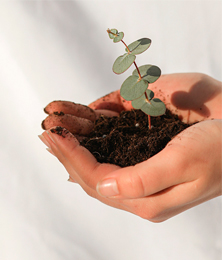 Vegan
Vegan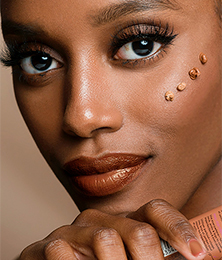 Beauty Corner
Beauty Corner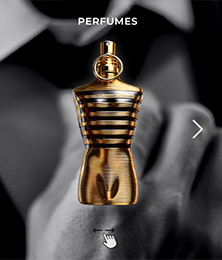 All for
All for Recommend and
Recommend and




















